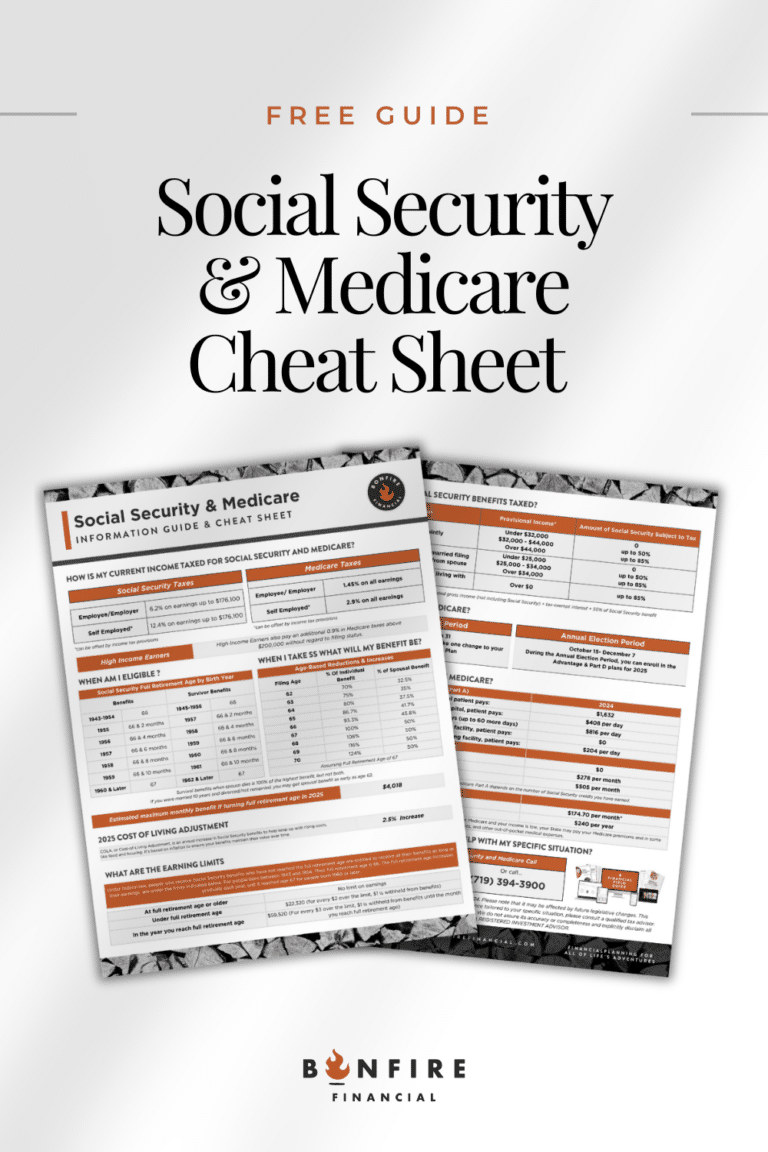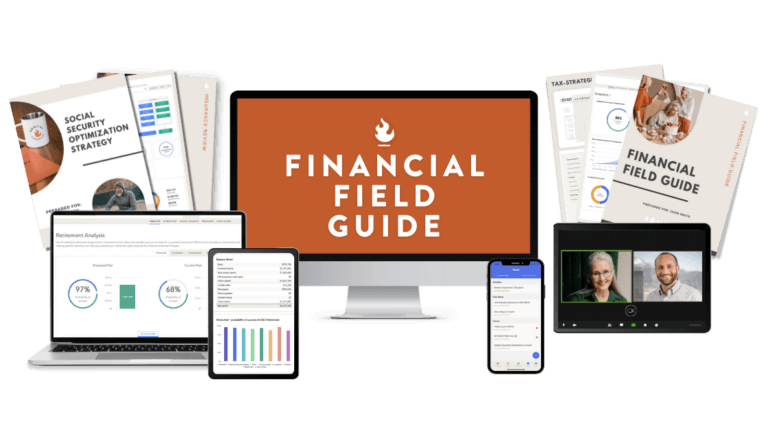Optimizing Retirement Accounts Tax Strategies
Managing and optimizing your retirement accounts and tax strategies is no small task. As you approach retirement, you may find yourself juggling a variety of accounts—401(k)s, IRAs, brokerage accounts, and even less common investments like private equity or cryptocurrency. This fragmented landscape can make it hard to see the full picture, let alone create a strategy that minimizes taxes and maximizes growth.
If this sounds familiar, it might be time to “zoom out” and look at your accounts as a cohesive portfolio. By shifting your focus from individual accounts to your overall financial landscape, you can create a tax-efficient strategy that works for your unique situation. In this post, we’ll walk you through the benefits of this approach and how to implement it.
Listen anywhere you stream Podcasts
iTunes | Spotify | iHeartRadio | Amazon Music
–
Why You Have So Many Accounts
It’s common for people to accumulate multiple accounts over the years. Perhaps you’ve switched jobs a few times, leaving behind 401(k)s with previous employers. Maybe you and your spouse have opened separate brokerage accounts or inherited an IRA. Add in tax-advantaged accounts like Roth IRAs and Health Savings Accounts (HSAs), and it’s no wonder your financial picture feels cluttered.
While having diverse accounts can offer flexibility, it can also lead to inefficiencies. If each account is managed in isolation, you may miss opportunities to optimize your retirement accounts and overall tax strategy or align your investments with your risk tolerance.
The Risks of Managing Accounts in Isolation
When managing retirement accounts individually, many people default to mirroring the same investment strategy across all of them. For example, they might allocate 60% to equities and 40% to bonds in every account. While this approach might feel consistent, it can lead to inefficiencies, particularly when it comes to taxes.
Each type of account—taxable, tax-deferred, and tax-free—has unique rules about how contributions, growth, and withdrawals are taxed. Ignoring these differences can result in unnecessary tax burdens, lower returns, and missed opportunities to grow your wealth.
The Solution: Viewing Your Portfolio as a Whole
The key to overcoming these inefficiencies and optimizing retirement accounts is to view your accounts as parts of a unified portfolio rather than standalone entities. This strategy, often referred to as asset location, involves placing investments in the accounts where they are most tax-efficient. By “zooming out” and considering your entire portfolio, you can optimize for both tax savings and growth.
Step 1: Understand Your Accounts
Before you can optimize your portfolio, it’s important to understand the tax implications of each account type:
- Taxable Accounts (Brokerage Accounts):
Contributions are made with after-tax dollars, and you’ll owe taxes on dividends, interest, and capital gains each year.- Best for: Investments with low tax burdens, such as municipal bonds or tax-efficient index funds.
- Tax-Deferred Accounts (401(k)s, Traditional IRAs):
Contributions are often pre-tax, and you won’t pay taxes on growth until you withdraw funds in retirement.- Best for: Growth-oriented investments, as taxes are deferred.
- Tax-Free Accounts (Roth IRAs):
Contributions are made with after-tax dollars, but growth and withdrawals are tax-free.- Best for: High-growth investments, as all gains are tax-free.
Step 2: Allocate Assets Strategically
Once you understand the tax implications of each account type, you can decide where to place your investments for maximum efficiency. Your asset allocation strategy is key.
- Place Fixed-Income Investments in Taxable Accounts
Fixed-income investments like bonds generate interest, which is taxed as ordinary income in taxable accounts. However, municipal bonds (munis) offer a tax-efficient alternative, as their interest is generally exempt from federal taxes (and sometimes state taxes if issued in your state). - Put Growth-Oriented Investments in Tax-Deferred and Tax-Free Accounts
Stocks and other high-growth assets are better suited for tax-advantaged accounts like IRAs and Roth IRAs. In a traditional IRA, your investments grow tax-deferred, meaning you won’t pay taxes until you withdraw the money. In a Roth IRA, growth is entirely tax-free, making it an ideal home for aggressive investments. - Balance Across Accounts
For example, if you want a portfolio that’s 50% equities and 50% bonds, you might place all your equities in a Roth IRA and all your bonds in a taxable account. Together, your accounts maintain your desired allocation, but each investment is housed in the most tax-efficient location.
Step 3: Optimize Withdrawals
As you approach retirement, the order in which you withdraw funds from your accounts can also impact your tax burden. A common strategy is to withdraw from taxable accounts first, allowing tax-deferred and tax-free accounts to continue growing. However, this depends on your specific situation, including your income needs and tax bracket.
Benefits of a Unified Approach
By treating your accounts as a whole, you can unlock several benefits:
- Tax Savings:
Minimizing taxes on dividends, interest, and capital gains allows you to keep more of your money. - Higher Growth Potential:
Placing growth-oriented investments in tax-advantaged accounts lets them compound more effectively. - Simplified Portfolio Management:
Instead of managing each account individually, you can focus on your overall allocation and strategy.
Common Misconceptions
It’s easy to fall into the trap of thinking every account should have the same allocation. While consistency feels safe, it often leads to inefficiencies. Another misconception is that asset location only matters for high-net-worth individuals. In reality, anyone with multiple accounts can benefit from this strategy.
How to Get Started Optimizing Your Retirement Accounts
- Review Your Accounts:
Take stock of all your accounts, including their balances, investment types, and tax statuses. - Consult a Financial Advisor:
Asset location can get complex, especially if you have a mix of account types. A CERTIFIED FINANCIAL PLANNER™ (like us, wink, wink) can help you create a strategy tailored to your needs. - Monitor and Adjust:
Life changes, market conditions, and tax laws can all impact your strategy. Regularly review your portfolio to ensure it remains aligned with your goals.
Final Thoughts
Managing and optimizing multiple retirement accounts doesn’t have to be overwhelming. By zooming out and viewing your portfolio as a whole, you can create a tax-efficient strategy that maximizes growth and minimizes headaches. Whether you’re just starting to think about retirement or already have a mix of accounts, it’s never too late to take a smarter approach.
At Bonfire Financial, we specialize in helping clients make sense of their financial landscape. If you’d like help evaluating your accounts and creating a strategy, reach out to us today.
 Client Login
Client Login







